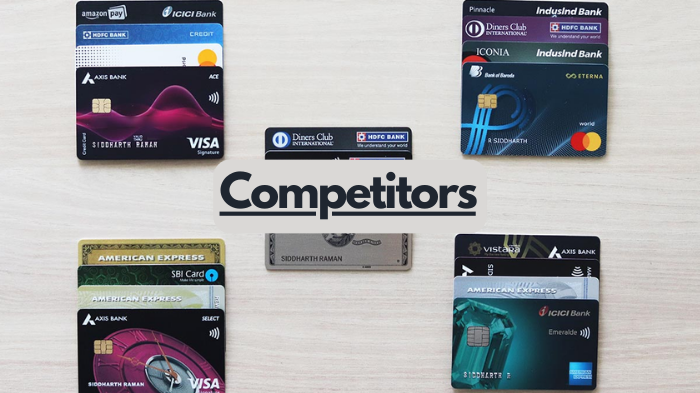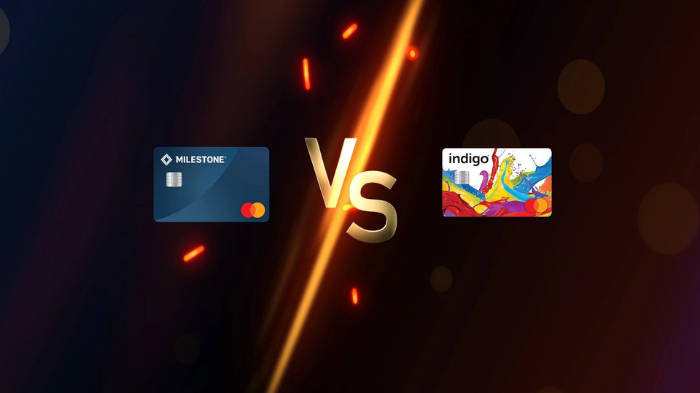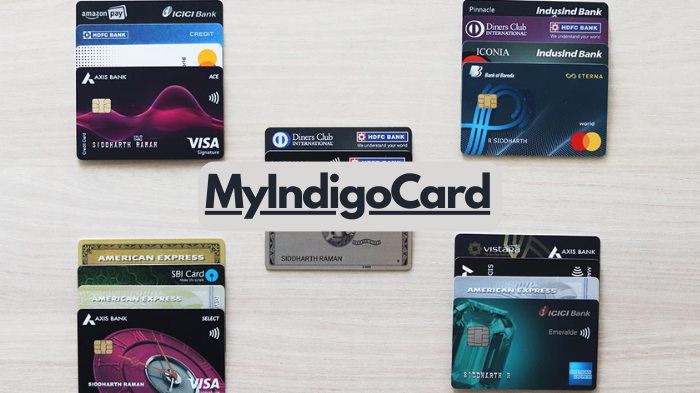
Comparing Indigo Credit Card vs. Popular Alternatives
Credit cards have become an integral part of our financial lives. With so many options out there, it can be difficult to determine which card is the best fit for your spending habits and financial goals. One new offering that has generated significant buzz is the Indigo Credit Card. In this article, we will take an in-depth look at the Indigo Card, break down its key benefits and features, and see how it stacks up against some of the most popular credit card alternatives on the market today.
The credit card landscape is highly competitive, with issuers continually innovating to offer increasingly rewarding sign-up bonuses, perks, and long-term cash-back opportunities. The Indigo Card aims to compete head-to-head with established heavy hitters in the cashback credit card sphere. With enticing rewards across common spending categories, no annual fee, and a solid sign-up bonus, the Indigo Card looks to be a strong option on paper. But how does it compare when analyzing the fine print against popular competitor cards? We will find out shortly. First, let’s overview the Indigo Card’s standout features.

Indigo Card Benefits and Features
The Indigo Credit Card looks to distinguish itself from the competition with generous cash-back rewards, especially in bonus spending categories that cardholders can maximize to their advantage. Here are some of the key perks and features that the Indigo Card advertises to attract customers:
Cashback Rewards
The bread and butter of any cashback credit card is the cashback rates it offers. The Indigo Card provides:
- Up to 5% Cashback on Select Categories: Cardholders can earn 5% cash back on purchases made in rotating quarterly category bonuses such as gas, dining, groceries, and more. This matches the highest tier of category-based cashback traditionally offered.
- No Limit on Cashback Earned: Unlike competitors with quarterly or annual caps on bonus cashback, the Indigo Card imposes no limits on how much 5% cashback you can earn in the rotating categories. Big spenders can maximize returns.
Lucrative Welcome Bonus
The Indigo Card features a solid sign-up bonus to incentivize applicants:
- $200 after Spending $500 in First 3 Months: By spending $500 within the first three months of account opening, you will earn $200 back along with any other cashback earned on those purchases. This provides quick returns on your spending.
No Annual Fee
Unlike more premium travel rewards credit cards, the Indigo Card does not charge an annual fee. This makes the card easy to hold long-term if the rewards earnings justify it.
0% Introductory APR Period
For the first 12 months after opening an Indigo Card, users can take advantage of:
- 0% Intro APR on Purchases and Balance Transfers: If financed responsibly, this intro period allows consumers to minimize interest fees as they pay down expenses over time or consolidate other credit card balances onto the Indigo Card.
Balance Transfer Offer
In addition to the 0% intro APR deal, the Indigo Card promotes:
- 0% Intro APR for 12 Months with No Balance Transfer Fee: This allows for affordable consolidation of high-interest balances from other issuers onto the Indigo Card.
Comparing the Indigo Card to Popular Alternatives
The Indigo Card certainly looks competitive on paper, but marketing materials only tell part of the story. Here is how some of its key features stack up next to widely-held competitor credit cards when we dig into the fine print and examine real-world utility:
Chase Freedom Unlimited
The Chase Freedom Unlimited card offers a straightforward cashback structure without the complexity of rotating quarterly categories.
Cashback Rewards
- 1.5% Flat Cashback on All Purchases: Chase Freedom Unlimited earns 1.5% back on every dollar spent, regardless of category. This simplicity can be advantageous for consumers who don’t want to track 5% rotating quarters.
Welcome Bonus
- $200 after Spending $500 in First 3 Months: Identical $200 signup bonus to the Indigo Card after meeting the $500 minimum spend.
Annual Fee
- No Annual Fee: Like the Indigo Card, there is no annual fee to worry about.
Verdict
- Indigo Card has Higher Cashback Potential but More Complexity: The Indigo Card can provide superior returns in its 5% rotating categories but requires cardholder effort to track bonuses and adjust spending habits each quarter to maximize rewards. For flat-rate cash back across all purchases, the Freedom Unlimited is easier to use.

Citi Double Cash
Offering uncapped 2% cashback across all purchases, the Citi Double Cash card is straightforward while providing healthy everyday returns.
Cashback Rewards
Simple 2% Back on All Purchases
Two per cent back may exceed the Indigo Card’s 1% everyday rate outside the 5% quarterly category bonuses. The flat 2% is uncomplicated.
Other Perks
None Really, No Sign-up Bonus
The Citi Double Cash card is light on perks or one-time bonuses. The sole allure is sustained by 2% base cashback.
Annual Fee
No Annual Fee
Again, no problematic annual fee is a plus.
Verdict
Citi Double Cash has Uncomplicated Higher Return, but Indigo has a Sign-up Bonus
The Citi Double Cash will earn more cashback than the Indigo Card in many cases excluding the 5% quarterly category bonuses. However, the Indigo Card’s temporary 200$ signup bonus provides an initial edge.
Capital One SavorOne
With 3% cashback in common spending categories, the Capital One SavorOne card warrants comparison to the Indigo Card:
Cashback Rewards
3% Dining and Entertainment, 2% Groceries, 1% Other
The SavorOne edges out the Indigo Card’s 1% everyday rate with boosted returns covering dining, entertainment, streaming services, and groceries.
Welcome Bonus
$200 after Spending $500 in First 3 Months
Equivalent signup bonus to the Indigo Card.
Annual Fee
No Annual Fee
Zero annual fee, the same as the Indigo Card.
Verdict
Indigo Card Compares Favorably for Flexibility and Bonuses
With uncapped 5% rotating quarter bonuses and no foreign transaction fees, the Indigo Card competes well against the SavorOne card. Both have lucrative signup bonuses that amplify first-year returns. Which card wins out depends on individual spending habits.

The Indigo Card is a Competitive Cashback Offering
Taking a holistic view, the Indigo Credit Card makes for a compelling cashback rewards competitor relative to established alternatives:
Recapping Main Benefits:
- Generous Cashback Rewards in Rotating Categories: The 5% quarterly bonuses for gas, dining, and groceries represent best-in-class limited-time rates.
- Lucrative Sign-up Bonus: A $200 signup bonus dwarfs everyday 1-3% cashback rates.
- No Annual Fee: You avoid premium card charges while still accessing generous rewards.
Consider Downsides:
- Complexity of Rotating Bonus Categories: Maximizing 5% of quarters takes attention and shifting spending habits.
- Unknown Reliability as New Card: The Indigo Card must stand the test of time. Initially, rewards look very competitive.
The Indigo Card Stacks Up Well
- Comparable or Better Returns than Established Options: When bonus categories align with spending, the Indigo Card is a top performer.
Even outside of the 5% quarterly categories, the Indigo Card’s 1% flat rate cashback on other purchases remains competitive. Combine this with the temporary signup bonus, and the Indigo Card looks like a winner over the first year at minimum.
The Last Word
The Indigo Card Makes for an Intriguing New Cashback Contender
Boasting high bonus category rates uncapped, plus a solid signup bonus, the Indigo Card turns heads against competitor offerings. Time will tell whether it represents a long-term keeper card for wallet optimization. But for now, its reward potential appears very competitive. Those looking to maximize cashback should strongly consider applying for the Indigo Card and evaluating if its 5% quarterly category bonuses align with their spending profile. Get in on the ground floor of this intriguing new option that stacks up respectably against the old guard.